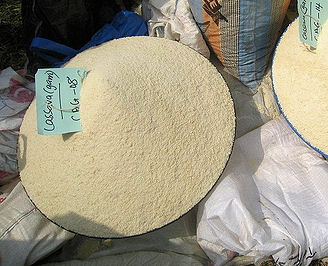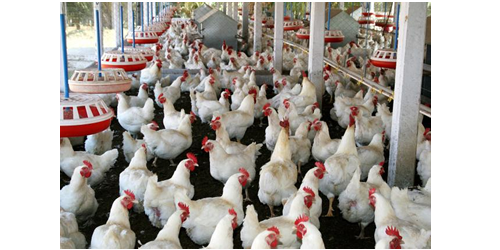Gari Remains One of Ghana’s Most Important Staple Foods – CEO

Madam Khadijah Benewaa who is the CEO of Halkhab Agro Processing Farm has expressed confidence in gari assuming a role as one of Ghana’s most important staple foods. According to her, this can however only be achieved if processors subscribe to the best practices as far as gari processing is concerned.
Gari is made from cassava which are peeled, grated, left to ferment and then fried in a dry pan. It is traditionally made at home in Ghana from cassava. The tubers are harvested, peeled, and grated in a grinding machine.
It is granular flour of varying texture, and a widely patronized Ghanaian food item that has over the years served as a “good companion” to students at all levels – from primary school to the university – particularly those in boarding facilities.
Madam Khadijah who recounted the several fears of eye problems expressed by consumers of gari referred to the staple as ‘just and ordinary food.”
The Department of Food and Agric has already indicated that gari could be enriched with a lot of nutrients if it is mixed with Soya beans and margarine.
The CEO of Halkhab Agro Processing Farm reiterated the role gari plays as a household staple food in both rich and poor homes.
“Every house needs gari which is for both the poor and rich and has a lot of nutritional values when mixed with other foods,” madam Khadija said.
Another benefit of gari consumption mentioned by the CEO is its function to increase vitality in consumers, adding that the product processed with margarine and soya bean is very nutritious.
“Gari mixed with margarine is very nutritious because margarine contains fat which helps the body and also contains carbohydrates which provides energy,” she said.
“There is a big difference between ‘raw gari’ and gari mixed with soya beans or margarine. It tastes nice, with a good aroma, with good nutrients. The gari mixed with soya beans or margarine has a longer life span because gari which has been well packaged does not lose its natural taste or quality,” she added.
Madam Khadija said gari mixed with margarine can last for up to eight months and also rich in various nutrients such as carbohydrates, moisture, fiber and energy.
She also encouraged gari processors to properly package the stuff to keep it from contamination as proper packaging prevents dust from infiltrating the gari compared to the product displayed by the roadside. She called on gari processors to prepare the food under safe and hygienic conditions.
Although gari is very popular among Ghanaians home and abroad as well as some people in the West African Sub-Region, such as Nigerians, there has not been much improvement in the equipment used in processing it.
Some processors say the enterprise is not an easy one as every process involves a lot of manual work coupled with a long period of exposure to open fire and smoke.
Others have also complained that the lack of state-of-the-art equipment such as modern frying utensils, crashing and drying machines as well as sheds to protect workers from direct sunshine and rainfall have prevented people involved in gari processing from expanding their businesses.
Gari can be enjoyed as a snack, ‘eba’, ‘gari foto,’ gari and shito (black pepper sauce), “yoo ke gari,” etc.
Source: Nana Ama Sarfo/amasarfo297@gmal.com/www.ritefmonline.org




